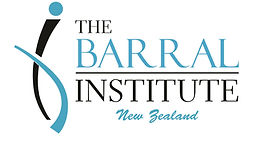
Visceral Manipulation
NEURAL Manipulation
Peripheral Nerve Manipulation; Upper Body (NM2)
Course Length: 3 days. CPD: 18 hours
Cost: Full price $1150.00 (NZ) incl GST,
Early Bird $950.00 (NZ) incl GST (payment in full required 6 weeks prior to course commencement)
Repeat $670.00 (NZ) incl GST
*secure your space now with a $200 deposit
Course Description:
This course explores evaluation and treatment techniques for peripheral nerves of the upper body.
When a nerve is fixed, it typically loses its ability to glide and/or stretch in length. The intra- or peri-neural pressure dramatically increases, at the same time there are changes in consistency. The nerve pathway shows functional interferences (blood supply or electric and/or electromagnetic conductivity).
With fixation, smaller nerve sections can harden. They feel like buds and are very sensitive or painful to the touch. Such "Nerve Buds" are an indication of an intraneural interference, an overload of physiological pressure points or a local fibrosis. Nerve buds can be released very effectively with Neural Manipulation.
Palpation of the skin branches of peripheral nerves can be useful for evaluative, as well for therapeutic considerations. When evaluating the skin branches, if they are sensitive or painful to pressure, typically there is a fixation of the deeper nerve branches.
Course Highlights:
-
Explore in detail the anatomy and function of the peripheral nerves of the upper body.
-
Discover typical pain patterns that arise from dysfunction of these peripheral nerves.
-
Learn evaluation methods and treatment techniques to facilitate normal functioning of these peripheral nerves.
-
Discover various methods for releasing restrictions in nerves.
-
Explore practical integration into treatment sessions.
Pre-requisite:
Neural Manipulation: Neuromeningeal Manipulation; An Integrative Approach to Trauma (NM1)
Required reading:
Required Advance Reading: Manual Therapy for Peripheral Nerves by Jean-Pierre Barral, RPT, DO; and Alain Croibier, D.O. Email admin@barral.co.nz to order
Suggested reading
Atlas of Human Anatomy by Frank Netter, MD and/or
A Regional Atlas of the Human Body by Carmine Clemente
.jpg)